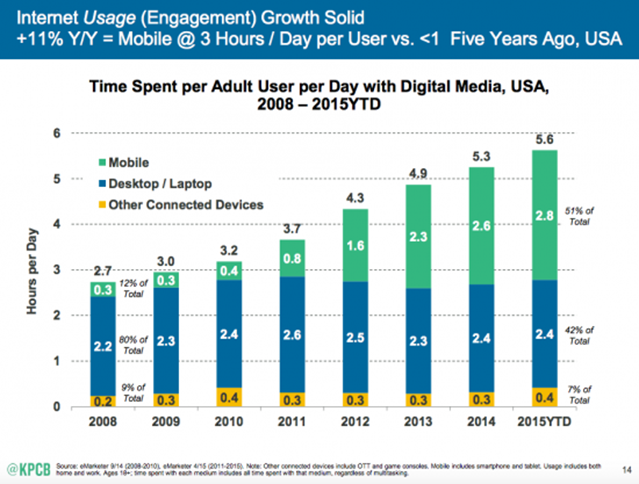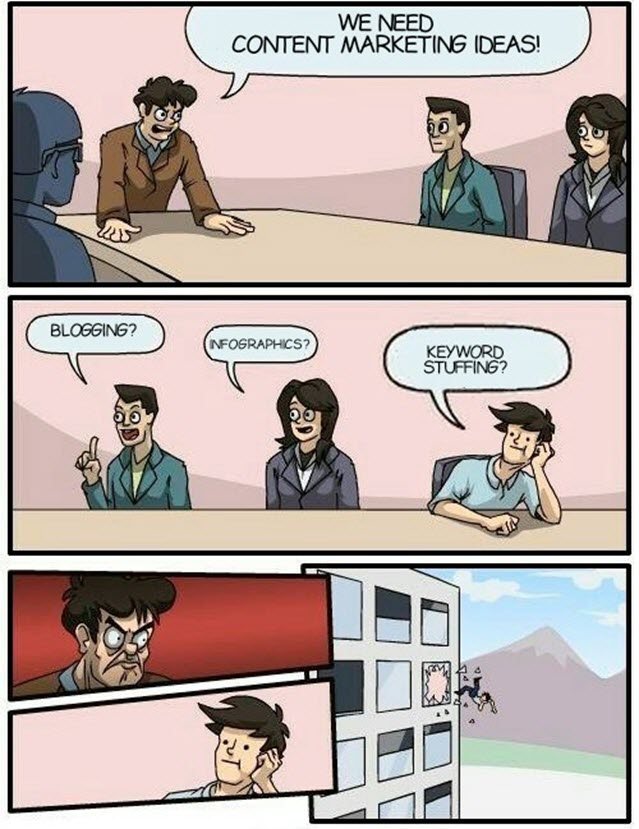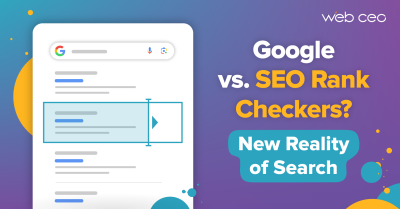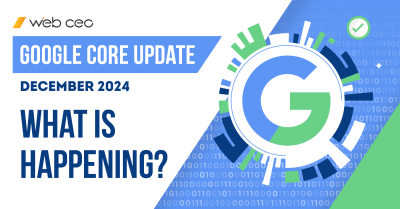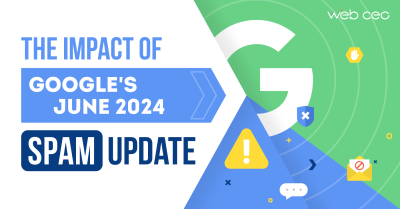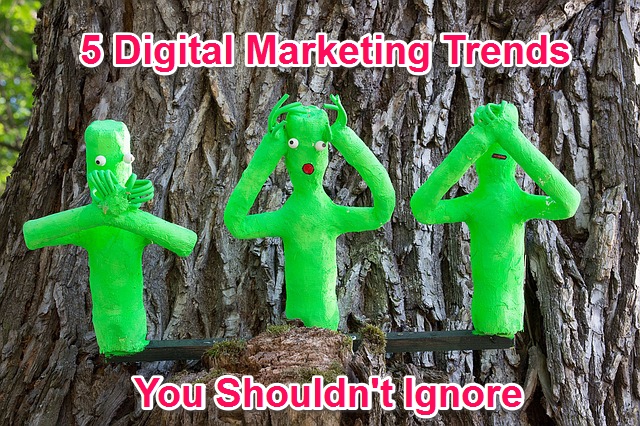
Digital marketing is a field where things are constantly changing and evolving. From one year to the next, countless trends emerge and fade. As marketers, our job is to stay on top of these shifts and place ourselves ahead of the curve. How do we achieve that? By looking ahead and making those changes right now.
Today we’re looking at five major changes coming down the pipeline for digital marketers. These changes have already begun, and while some of them will require work, they shouldn’t be ignored.
5 Digital Marketing Changes Happening Right Now
Now that 2016 is in full swing, Digital Marketing is undergoing changes that will change everything we think we know about the industry. It happens every year, and this one is no different. Let’s dive in and see how you can stay ahead.
It’s Time to Go Responsive
Responsive web design is nothing new, but many digital marketers have been hesitant to implement it because of the potential work and effort that is required to make it work. In short, a responsive design allows a website to change its width and resolution to match the user’s preferred devices.
That means the site will change its layout to accommodate computers, mobile devices, laptops, Kindles, iPads, and everything in between. A few years ago, this wouldn’t have been a priority, but now it is imperative if you want to rank well on Google and reach your audience.
Take a look at this graph that illustrates mobile vs desktop usage over the last several years:
By the end of 2015, people were accessing the internet more on mobile devices than they did on desktops. Then of course, we have to consider whether or not responsive design is a ranking factor for Google. While there are arguments to be made in either direction there, it’s clear that Google prefers responsive design over the alternatives like adaptive design or a separate mobile site.
What all of this boils down to is the user experience. Place yourself in the shoes of a user browsing your site on their smartphone. They want the same quality experience and ease of use on their phone that they have on their computer.
Here are some of the ways you can make your website responsive today:
- Choose a responsive WordPress theme
- Modify your media queries (CSS3) files to display elements of your site at certain dimensions.
- Hire a programmer through a place like Upwork to do the designs for you.
- Use WebCEO’s Website Audit to check if your site is optimized for mobile devices.
The Evolution From SEO to Content Marketing
There was a time when search engine optimization (SEO) was all about trying to work the system. People purchased backlinks, stuffed keywords in, and generally provided content that wasn’t useful to users. Instead, they were appealing to the spiders that crawled their pages so the search engines would put them higher in the SERPs.
That didn’t last long. As time went on, SEO became a science that guided us to cover the right topics and provide the right information on a particular topic based on what people searched for online. As we move into 2016, there are plenty of WordPress SEO tips you’ll need to know, but the general trend that needs to be addressed is the rise of content marketing.
Content Marketing is the next step in the SEO evolution for digital marketers. The concept here is to bring your audience content that is both useful and valuable. Timeless SEO tactics like keyword research play into this by guiding your hand and steering you in the direction of content that your audience will like.
Here are two major ways you can start implement content marketing strategies into your routine:
- Blogging
This is what most people will associate content marketing with. A blog is perfect for any business as it offers a means to produce useful articles and information. It also supports growth of the brand and connects customers to the company. With WebCEO’s Keyword Research Tool, you can discover the ideal keywords for your niche, allowing you to create articles that are both valuable for your audience and optimized for search engines.
- Infographics
Have you ever visited a website and see an awesome image that is packed with information? You have to scroll to see all of it, but everything in there is useful. This is the marriage of information and graphics, hence the name infographic. You can design these yourself with tools like Canva, or you can hire a designer to do it for you.
Once you have one put together, you can share it to other websites and on social media. These are eye-catching and people are often inclined to share them if they’re useful.
Videos Take Center Stage
YouTube has become a massive platform since it was first introduced. Today you’ll find plenty of shocking statistics that show just how big it truly is:
- 300 hours of video are uploaded every minute!
- Every day, 5 billion videos are watched
- 80% of views are outside the United States
- The average number of daily mobile views is 1,000,000,000
With these kinds of numbers, it’s apparent video content is here to stay. More and more businesses and marketers are turning to platforms like this to create new types of content, and you should too.
Video content engages your users in a unique way and studies have shown that they can increase site visits by as much as two minutes! There’s no science to video content either. You can even use the camera on your phone to film quick little video posts.
Video blogs or vlogs are quickly gaining popularity for this exact reason. If you don’t have a writer handy, a simple video covering the same topic can do the trick.
Design and Speed Take Priority
As time goes on, the average attention span of online users is declining. According to studies, our attention span online is now eight seconds, which is less than the attention span of a goldfish. This knowledge sends ripples through all of digital marketing. Now we have a time limit.
Our websites have to load incredibly fast and present eye-catching designs that grab that attention and hold it. Let’s start with speed. How fast do users expect your website to load? Over 47% expect it to be loaded within two seconds.
So, the real question now is how do I speed up my website? Here are some quick tips:
- Try optimizing your images so they have a smaller file size. A tool like Optimizilla is totally free and does the trick!
- Use a caching plugin like W3 Total Cache for WordPress to better load your pages.
- Utilize a Content Delivery Network to deliver content based on a user’s location.
- Utilize Google AMP project which will help your content load faster in mobile searches.
Next up is your website design. This involves everything from pictures, to the layout, to the colors and flow. Recent developments in rich text and ad placement research have shown that the famed F-shaped reading patterns are no more. Instead, people are now focusing their attention at the top of the search results and on the rich text to the right:
As you can see, the shape doesn’t resemble any letter I’ve ever seen, certainly not an “F.” This confirms that the top results will continue to see the most traffic, but what does it say about our websites?
This information tells us that the first two paragraphs are the most important, while subsections should always start with strong words to keep the user’s attention. You could also consider adding your own rich text with products to the right of the opening paragraphs to mirror the SERPs structure. Using things like bullet points and Italics are also beneficial.
As for the other elements of your design, always remember that you want to promote a positive user experience. Place yourself in the user’s shoes and follow the path you have set for them. Look for pitfalls or frustrations that you can remove and clear the way for your users to reach your end goals.
Content is Becoming More Interactive
We’ve all heard of Buzzfeed and while some of us hate it for the clickbait headlines, there’s no denying that it’s successful. So, should you start writing headlines with ridiculous amounts of capitalization? Thankfully, no.
It’s the quizzes. Buzzfeed has brought a variety quizzes into the light that users can interact with. While you may not be interested in presenting a quiz on what type of fruit your users are, you should start considering interactive content like this to engage your users.
This will help with the aforementioned attention spans as well. Perhaps you can help solve a problem for someone by asking them to answer a few questions and present a solution/link to one of your articles? This kind of interaction is the way of the future.
Another example is 360-degree video which is really neat in action. Anything that allows the user to interact directly with the content is the way of the future.
Final Thoughts
All of these digital marketing trends point to a future where the user experience is placed at the center of everything. Start thinking about how you can engage and excite your users in 2016 and beyond. You’ll find that these trends help place you in that mindset.
What ways are you changing your digital marketing in 2016? Let us know in the comments below!
